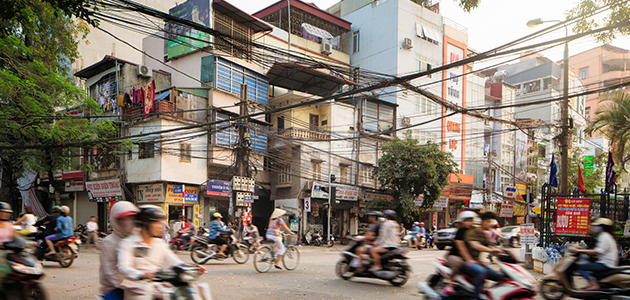Demand for Reliable Power is a Global Phenomenon
Back to Top
Utilities in various parts of the world, including the United States, the United Kingdom, and Australia, have made great strides to provide improved power reliability to their customers. These improvements, however, are putting pressure on utilities in other parts of the world where expectations for similar power performance are growing.
Utilities across Asia, for example, are going through massive changes. In Southeast Asia, demand for electricity in the region has grown by 80% since 2000, and it is expected to continue to grow at twice the global average for the next 20 years.
One of the key drivers of this demand for reliable, always-on electrical power is the youth demographic. The five most populated Southeast Asian countries—Indonesia, Philippines, Vietnam, Thailand, and Myanmar—together have more than 90 million youth. Among them are a growing number of young entrepreneurs who are setting up businesses in several sectors, all requiring reliable power, reliable Internet connections, and reliable manufacturing processes. This compares with previous generations in Asia, many of whom grew accustomed to only having power on to run lights and operate equipment for only a few hours a day.
While expectations for always-on power offer exciting opportunities, it creates significant pressure on utilities, which face huge infrastructure and personnel challenges. The demand for electricity in Asia is needed now, whereas it took time for countries in other parts of the world to establish the reliable power systems that we see today. Expectations for technology-leapfrogging, such as the mobile phone in the telecommunications industry, are also being imposed on utilities in the form of reliability expectations.
Utilities can’t go from point A to point C magically. In many instances, the transition requires major infrastructure upgrades in equipment and resources, including the training of personnel. Unlike the telecommunications industry, power distribution requires wires. Numerous cases start with the basic necessity of installing many more overhead poles. And then they need the switches, fuses, reclosers, fault interrupters, and other equipment necessary on those poles to sustain power reliability. That all takes time.
Training is important, but it, too, will take time. To address the immediate utility needs in Southeast Asia, and given the region’s workforce constraints, it’s important for manufacturers providing them equipment to not only offer products that are reliable and sustainable, but that are also easy to install and use. As their workers become equipped with more training and resources, and their infrastructures improve, utilities can explore automation and other more advanced systems being used in other parts of the globe.
There will not be a one-size-fits-all solution to these challenges. Utilities will need to address both the implementation of new technology as well as the training of their workforce to support these new reliability expectations. It is important that they not do this alone, so manufactures must be there to support utilities as partners to tackle this exciting challenge.